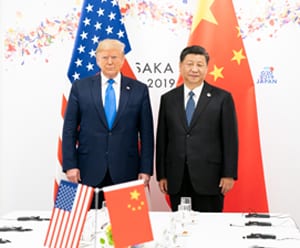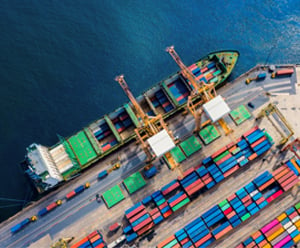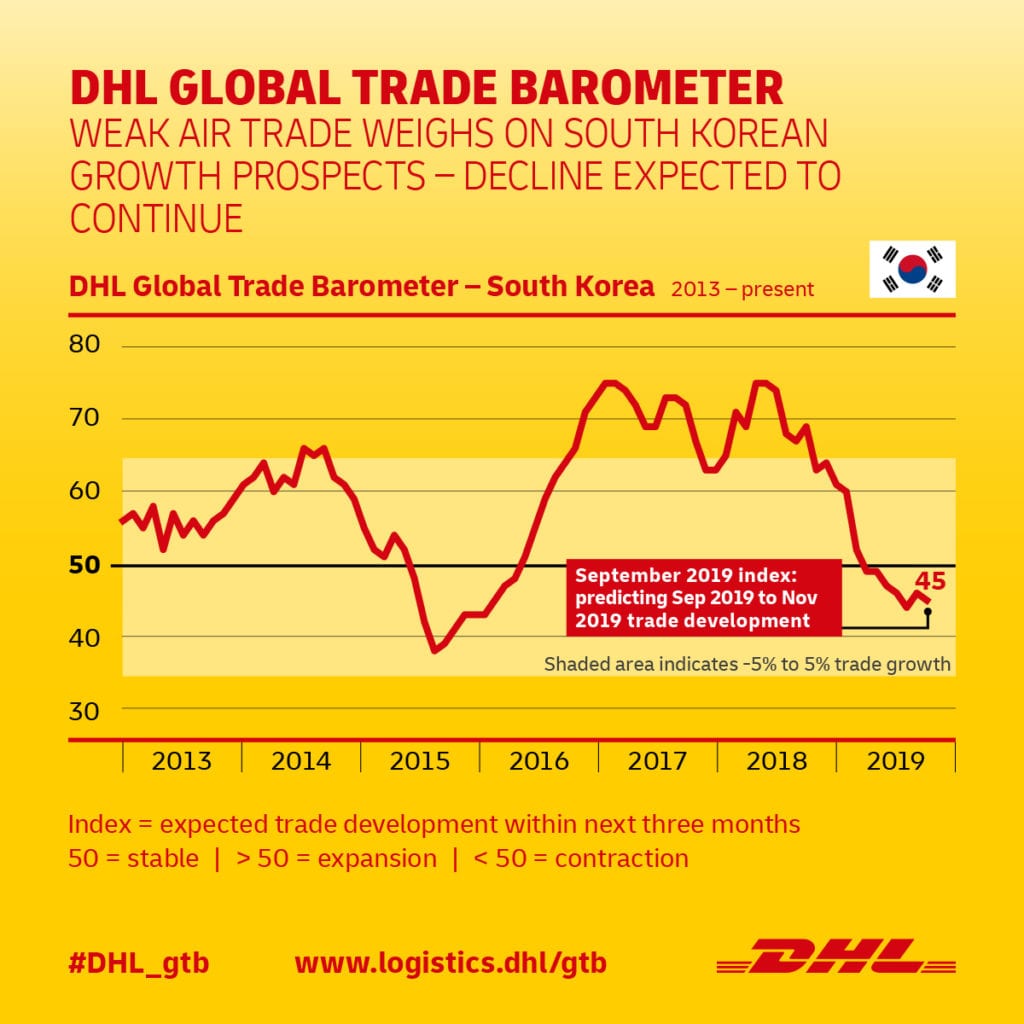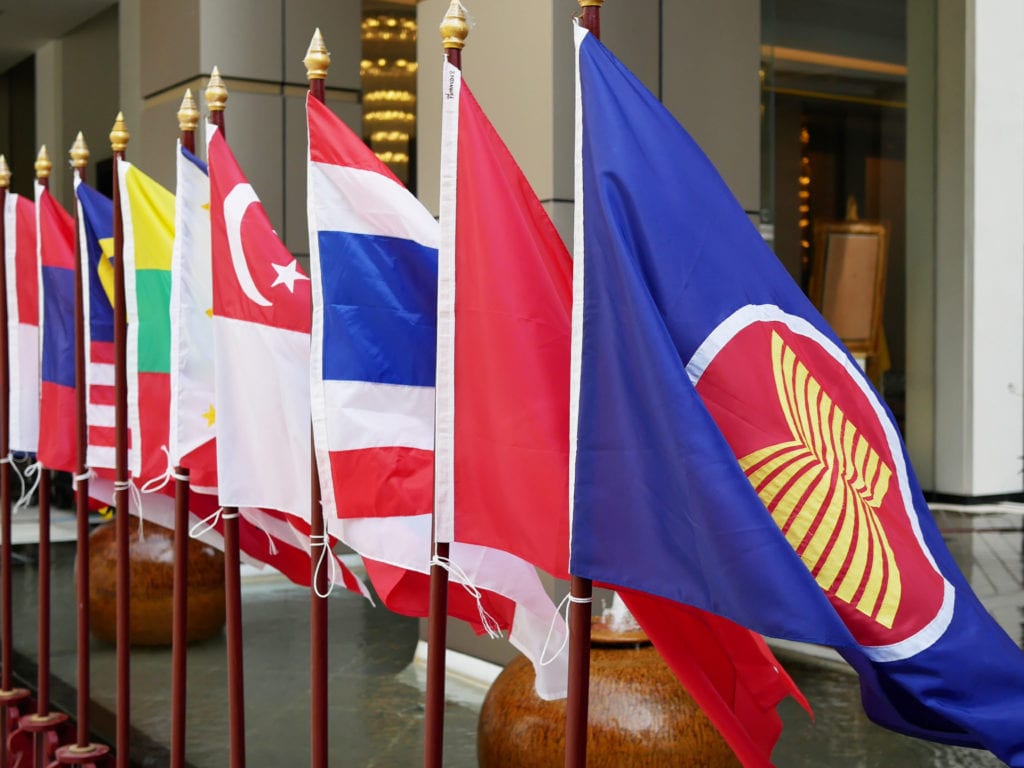
South Korea’s pivot to ASEAN: What it means for trade

South Korea has kept ties with the Association of Southeast Asian Nations (ASEAN) for three decades now, but the bloc has never been at the core of its foreign policy agenda, despite ASEAN being its second-largest trade partner.
This is changing, thanks to South Korean President Moon Jae-in’s ‘New Southern Policy.’ Unveiled in 2017, the policy aims to raise South Korea’s relationships with ASEAN and India to the same level as its top diplomatic partners — China, Japan, Russia, and the U.S.
It focuses on three key areas: people, prosperity, and peace. In terms of trade, the policy aims to increase the two-way volume with ASEAN to US$200 billion (€182 billion) by 2020, from US$149 billion in 2017.
But why this greater interest in ASEAN — and why now?
Lowering risks
With a GDP of US$2.5 trillion and a population of 650 million, ASEAN offers any trading partner robust opportunities.
But South Korea’s shift in focus to the region has a bigger motivation: to cut the risks of depending on its four major partners. The U.S.–China trade conflict is costing South Korea’s export-oriented economy greatly.
Total exports fell for the ninth month in a row in August as demand from China slowed, particularly for computer chips — South Korea’s core export. Exports to China dropped 21.3 percent in August, while those to ASEAN grew 1.9 percent.
Closer to home, Japan’s restrictions on exports to South Korea have highlighted the risk of relying on the Japanese market for critical manufacturing materials.
As pressure from these conflicts increases, South Korea is trying to form new alliances with other countries, according to Lee Jaehyon, senior fellow at the Asan Institute for Policy Studies in Seoul. “In this regard, ASEAN is Korea’s number one partner for strategic cooperation,” he said.
ASEAN’s proximity to South Korea and its existing relations with the country make it an ideal partner. Besides trading with ASEAN, South Korea invests significantly in the region, which is the country’s third-largest investment partner. South Korea also maintains regular dialogues with the bloc — together they hold an annual summit and ministerial meetings.
“The relationship between ASEAN and Korea today justifies the Moon Jae-in administration’s emphasis on ASEAN,” said Lee.
The group’s rapid economic growth also makes it attractive to South Korea. The GDP of the ASEAN–5 economies (Malaysia, Thailand, Indonesia, the Philippines, and Vietnam) alone is forecast to grow by 5 percent in 2019 and 2020. In contrast, South Korea’s economy is expected to expand by only 2.4 percent in both years.
Gains from closer ties
Boosting its relationships with ASEAN will help South Korea grow its trade with the bloc and reduce its reliance on its major partners for exports. Despite trading freely with the group for the past 12 years, the country only ranks fifth among ASEAN’s trade partners.
Increasing trade with ASEAN is particularly important as the outlook for South Korea deteriorates. DHL’s Global Trade Barometer (GTB) expects the country’s trade to continue to contract. In the three months to September 2019, the GTB’s index for South Korea has fallen by one point to 45, dragged down by declining air trade.
The New Southern Policy also comes at a good time, as China sharply grows its influence in ASEAN, and as the region gets caught in the middle of competing superpowers.
A recent survey by think tank ISEAS–Yusof Ishak Institute found that many regional experts worry that “ASEAN is becoming the arena of major power competition.” Some analysts believe South Korea’s strategy to forge closer ties with ASEAN could help balance power dynamics in the region.
From an ASEAN perspective, “South Korea is more palatable than Washington or Beijing,” according to Scott Snyder, senior fellow for Korea studies at the Council on Foreign Relations.
Implementing the policy
South Korea’s New Southern Policy has so far led to initiatives such as building a smart city in Malaysia and an industrial complex in Myanmar.
The country is also negotiating bilateral free trade deals with Indonesia, Malaysia, and the Philippines to boost trade. If signed, these deals will bring South Korea’s bilateral trade agreements with ASEAN countries to five. It already has pacts with Singapore and Vietnam.
To support the policy, South Korea increased the 2019 budget for its Ministry of Foreign Affairs by more than 35 percent, to KRW2.2 billion (€1.7 million).
In September, President Moon also became the first South Korean president to have visited all of the bloc’s 10 member countries, reaffirming his administration’s keen interest in a fruitful partnership with ASEAN.
MORE FROM THIS COLLECTION












 English
English